Related Research Articles

Alfred Elton van Vogt was a Canadian-born American science fiction author. His fragmented, bizarre narrative style influenced later science fiction writers, notably Philip K. Dick. He was one of the most popular and influential practitioners of science fiction in the mid-twentieth century, the genre's so-called Golden Age, and one of the most complex. The Science Fiction Writers of America named him their 14th Grand Master in 1995.
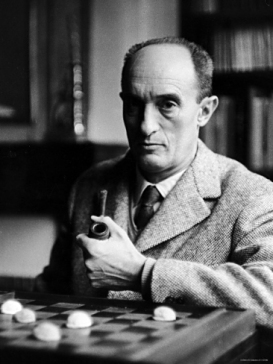
Pierre François Marie Louis Boulle was a French author. He is best known for two works, The Bridge over the River Kwai (1952) and Planet of the Apes (1963), that were both made into award-winning films.
This article contains information about the literary events and publications of 1912.
This article contains information about the literary events and publications of 1929.
This article contains information about the literary events and publications of 1994.

Andre Alice Norton was an American writer of science fiction and fantasy, who also wrote works of historical and contemporary fiction. She wrote primarily under the pen name Andre Norton, but also under Andrew North and Allen Weston. She was the first woman to be Gandalf Grand Master of Fantasy, to be SFWA Grand Master, and to be inducted by the Science Fiction and Fantasy Hall of Fame.

Frans Masereel was a Belgian painter and graphic artist who worked mainly in France. He is known especially for his woodcuts which focused on political and social issues, such as war and capitalism. He completed over 40 wordless novels in his career, and among these, his greatest is generally said to be Passionate Journey.
The Golden Age of Science Fiction, often identified in the United States as the years 1938–1946, was a period in which a number of foundational works of science fiction literature appeared. In the history of science fiction, the Golden Age follows the "pulp era" of the 1920s and 1930s, and precedes New Wave science fiction of the 1960s and 1970s. The 1950s are, in this scheme, a transitional period. Robert Silverberg, who came of age then, saw the 1950s as the true Golden Age.
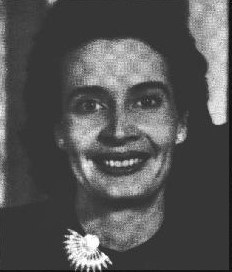
Edna May Hull van Vogt was a Canadian science fiction writer who published under the name E. Mayne Hull. She was the first wife of A. E. van Vogt, also a science fiction writer.
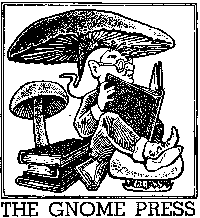
Gnome Press was an American small-press publishing company primarily known for publishing many science fiction classics. Gnome was one of the most eminent of the fan publishers of SF, producing 86 titles in its lifespan — many considered classic works of SF and Fantasy today. Gnome was important in the transitional period between Genre SF as a magazine phenomenon and its arrival in mass-market book publishing, but proved too underfunded to make the leap from fan-based publishing to the professional level. The company existed for just over a decade, ultimately failing due to inability to compete with major publishers who also started to publish science fiction. In its heyday, Gnome published many of the major SF authors, and in some cases, as with Robert E. Howard's Conan series and Isaac Asimov's Foundation series, was responsible for the manner in which their stories were collected into book form.

NESFA Press is the publishing arm of the New England Science Fiction Association, Inc. The NESFA Press primarily produces three types of books:
A fix-up is a novel created from several short fiction stories that may or may not have been initially related or previously published. The stories may be edited for consistency, and sometimes new connecting material, such as a frame story or other interstitial narration, is written for the new work. The term was coined by the science fiction writer A. E. van Vogt, who published several fix-ups of his own, including The Voyage of the Space Beagle, but the practice exists outside of science fiction. The use of the term in science fiction criticism was popularised by the first (1979) edition of The Encyclopedia of Science Fiction, edited by Peter Nicholls, which credited van Vogt with the creation of the term. The name “fix-up” comes from the changes that the author needs to make in the original texts, to make them fit together as though they were a novel. Foreshadowing of events from the later stories may be jammed into an early chapter of the fix-up, and character development may be interleaved throughout the book. Contradictions and inconsistencies between episodes are usually worked out.
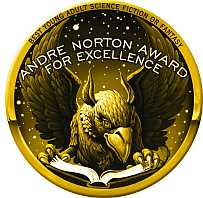
The Andre Norton Nebula Award for Middle Grade and Young Adult Fiction is an annual award presented by the Science Fiction and Fantasy Writers Association (SFWA) to the author of the best young adult or middle grade science fiction or fantasy book published in the United States in the preceding year. It is named to honor prolific science fiction and fantasy author Andre Norton (1912–2005), and it was established by then SFWA president Catherine Asaro and the SFWA Young Adult Fiction committee and announced on February 20, 2005. Any published young adult or middle grade science fiction or fantasy novel is eligible for the prize, including graphic novels. There is no limit on word count. The award was originally not a Nebula Award, despite being presented along with them and following the same rules for nominations and voting, but in 2019 SFWA announced that the award was considered a Nebula category.
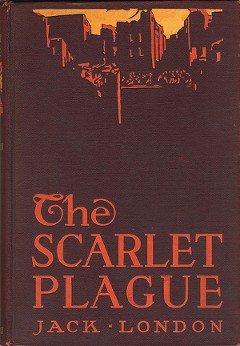
The Scarlet Plague is a post-apocalyptic fiction novel by American writer Jack London, originally published in The London Magazine in 1912. The book was noted in 2020 as having been very similar to the COVID-19 pandemic, especially given London wrote it at a time when the world was not as quickly connected by travel as it is today. However unlike COVID-19, in this story, victims died within an hour and mortality was practically 100%.
Deutscher Science Fiction Preis is a German literary award. Together with the Kurd-Laßwitz-Preis, it is one of the most prestigious awards for German science fiction literature. The award was established in 1985 by the Science Fiction Club Deutschland, a German Science Fiction society. Each year, the award is given to the best German science fiction short story and the best German novel from the previous year.
Karsten Kruschel is a German science fiction writer, essayist and critic, who lives near Leipzig. His best known works are the Deutscher Science Fiction Preis winning novels Vilm and Galdäa. Some of his short stories were nominated for or won the Kurd-Laßwitz-Preis.
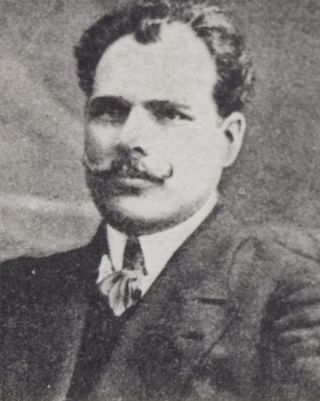
Dimitrie N. Marinescu (1882–1916) was a Romanian typographer, socialist and pacifist. He was a founder and General Secretary of the first Social Democratic Party of Romania in 1910.
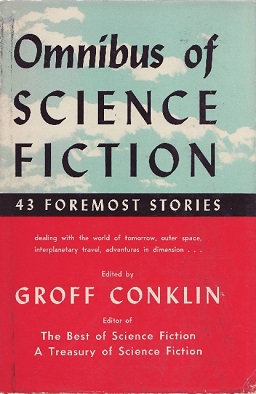
Omnibus of Science Fiction is an anthology of science fiction short stories edited by Groff Conklin. It was first published in hardcover by Crown Publishers in 1952, and reprinted in 1953; a book club edition was issued by the same publisher with the Science Fiction Book Club in the same year. Later editions were issued by Bonanza Books/Crown Publishers in 1984 and Chatham River Press in 1984. An abridged paperback version including eleven of its forty-three stories was published by Berkley Books in August 1956 under the variant title Science Fiction Omnibus and reprinted in November 1963. A two-volume British edition, also abridged, was published in hardcover by Grayson & Grayson in 1953-1954 under the variant titles Strange Travels in Science Fiction and Strange Adventures in Science Fiction; together, they included twenty-two of the original forty-three stories.

Wolfgang Herrndorf was a German author, painter, and illustrator.
References
- ↑ "Andre Norton" . The Independent. Archived from the original on 2022-05-01. Retrieved 18 June 2018.
- ↑ "Pierre Boulle – French author". Encyclopedia Britannica. Retrieved 18 June 2018.
- ↑ Reginald, R.; Burgess, Mary A.; Menville, Douglas (2010). Science Fiction and Fantasy Literature. Wildside Press LLC. p. 844. ISBN 9780941028783.
- ↑ "A E van Vogt". the Guardian. 1 February 2000. Retrieved 18 June 2018.
- ↑ Das Menschenschlachthaus: Bilder vom kommenden Krieg (in German). 1912. OCLC 4202541.
- ↑ Riva, Michele Augusto; Benedetti, Marta; Cesana, Giancarlo (October 2014). "Pandemic Fear and Literature: Observations from Jack London's The Scarlet Plague". Emerging Infectious Diseases. 20 (10): 1753–1757. doi:10.3201/eid2010.130278. PMC 4193163 . PMID 25401183.
- ↑ Review Articles: November 1996